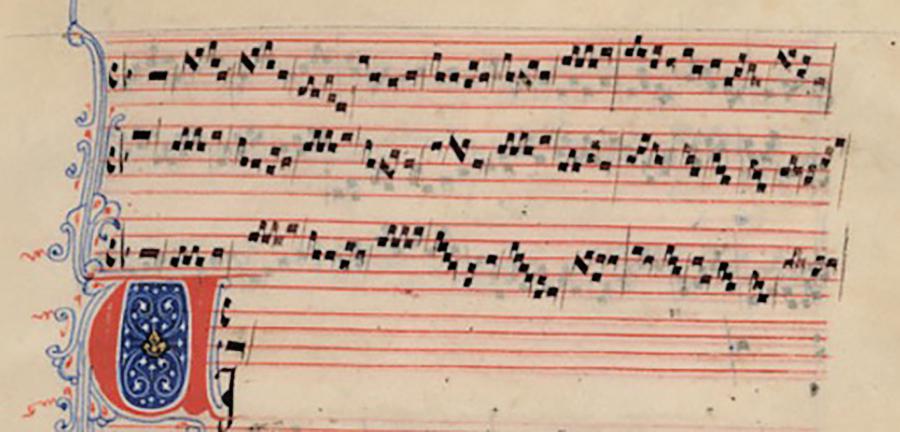'COORDINATION IN RHYTHM' – MODAL NOTATION
3.2
Encoding musical rhythm
Musical rhythm is one of the basic aspects that we experience as we listen to music. However, a way to record rhythmical proportions was introduced precisely into the history of musical notation at a comparatively late stage.
As we have learned previously the pitch was the first musical dimension that was fixed in medieval music notation due to the introduction of lines. After the very first emergence of the Dasia notation in the 9th century exact pitches were notated systematically with diastematic neumes introduced by the Aquitanian and the Italian neumatic notation (Guido of Arezzo) from the 11th century onwards. Rhythm is the second musical dimension that was fixed in musical notation.
During the early 13th century medieval musicians had to solve the problem of how to visualise musical rhythm. If pitch could easily be represented following the spatial analogy of high and low, rhythm needed to be notated in a different way.
With the Parisian practice of polyphonic music at Notre Dame, which began around 1150 and was further developed until 1250, a new musical repertoire was composed stimulating the implementation of a new type of notation which was able to fix rhythmic patterns. Modal notation is the first example of rhythmic notation in Western music history.

Four-Part Graduale Viderunt omnes written in modal notation.
© Firenze Biblioteca Medicea Laurenziana, Plut. 29.1, fol. 1r
As you may see in the example above, this notation adopted the shape of its notes from the way the liturgical chant was written down at that time: all four voices resemble square notation. The real challenge is, that in this polyphonic repertoire these signs needed to carry rhythmical meaning.
Please compare now the first line of the manuscript with a modern transcription below:

License
Copyright: University of Basel
